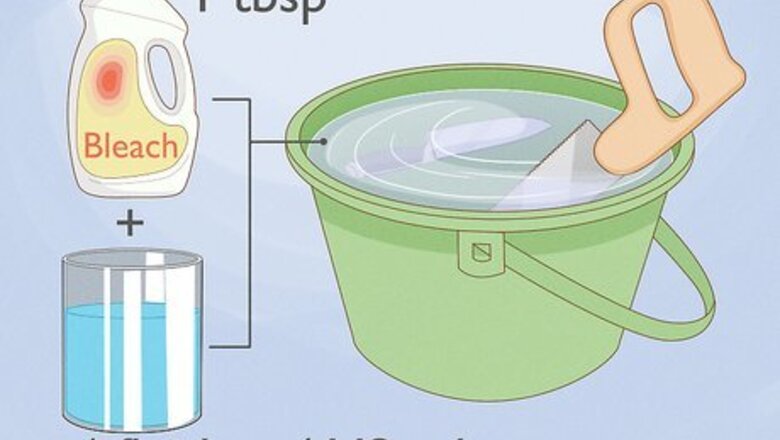
views
Propagating Culm Cuttings
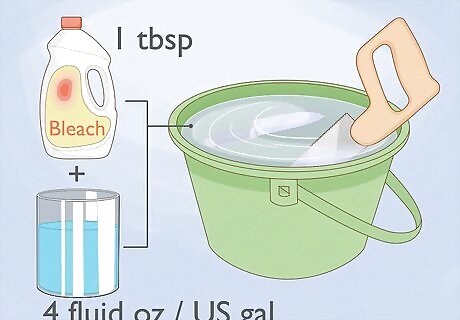
Pick and sterilize the correct tool to cut the bamboo. The tool you use will depend on how thick and hearty your bamboo is. If you have thin bamboo, you may be able to use a sharp knife. If your bamboo is heartier, you may have to use a handsaw. Whatever tool you end up using, sterilize it first with household disinfectants, such as diluted bleach or rubbing alcohol. If you are using bleach to sterilize your tool, dilute it with water first. Use 1 part bleach for every 32 parts water. For example, use 1 tablespoon (15 ml) of bleach for every 1/2 liter (0.13 US liquid Gallon) of water or 4 fluid ounces per US Gallon.
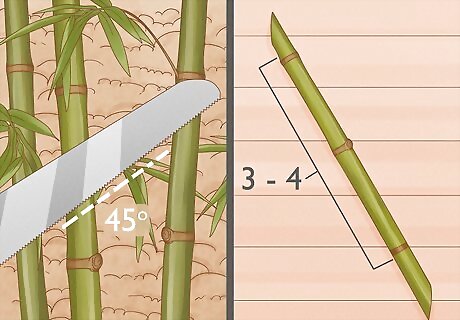
Cut a 10 inches (25 cm) piece of bamboo at a 45° angle. Each piece you cut from the bamboo should contain at least 3 or 4 nodes, the rings that wrap around the stalk. The bamboo should be at least 1 inch (2.5 cm) in diameter if you want to successfully grow from a cutting.
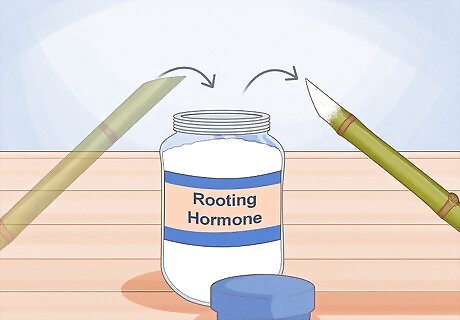
Apply a rooting hormone to one end of the cutting. The rooting hormone will help the roots develop faster once you replant the cutting. Dip the end of the bamboo into the hormone and shake off any excess. Root growth hormone can be purchased in a powder form at any gardening store.

Apply ⁄8 inch (3.2 mm) of soft wax around the rim of the exposed end. Use a soft wax, like soy wax or beeswax. The wax will help prevent the stalk from rotting or drying. Make sure you do not cover the center hole with wax.
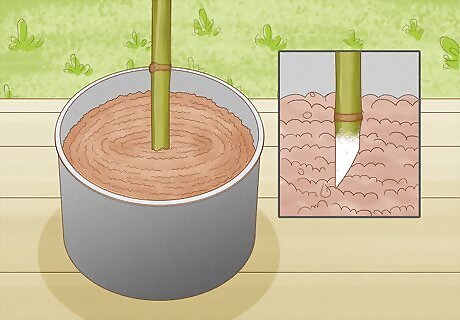
Bury the cutting 1 node deep into a pot filled with potting soil. A small nursery pot will work fine for each cutting. Push the bamboo into the potting soil until 1 node is completely buried. Press the soil firmly around the bamboo to eliminate any air pockets present.

Mist the soil thoroughly with a spray bottle. The soil should feel damp to the touch and should be saturated, but not muddy. Stick your finger into the soil to the first knuckle to make sure the soil is wet.

Fill the center of the cutting with water. While the roots will develop with moist soil, pouring water into the center of the stalk will give extra water to your cutting. Check the water level every 2 days and keep the center mostly filled with water as it grows.

Keep the pots in a warm area out of direct sunlight and water them daily. The bamboo cuttings should be kept in mostly shade while it grows, but a little light throughout the day is okay. Check the soil daily to keep it moist. Don’t let water sit on top of the soil. Too much water will put any developing roots at risk of rotting. You can place a plastic bag over the cutting to help the plant retain moisture, though this is not necessary for it to grow.
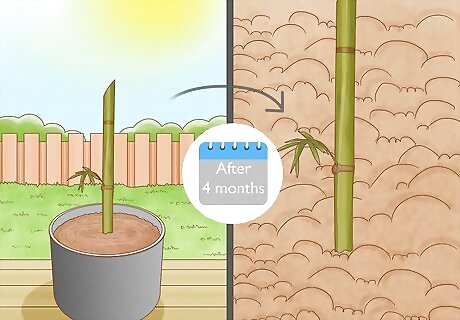
Transplant the bamboo after 4 months. Within 3 to 4 weeks, you should notice your cutting growing in height and more branches appearing from the nodes. After it’s been in the pot for 4 months, you can transplant the cutting into the ground. Gently loosen the soil in the pot with a hand shovel or trowel so it can be easily removed. Place the bamboo into a hole slightly larger than the bamboo root system. Replace the soil around the bamboo and water it thoroughly.
Keeping Cuttings in Water

Take 10 inches (25 cm) cuttings off new bamboo growth. The cuttings you take should have at least 2 nodes and 2 culms, the areas between the nodes. Cut the bamboo at a 45° angle as best you can with a sharp knife. Sterilize the knife with household disinfectants, such as diluted bleach or rubbing alcohol, before cutting the bamboo stalk.

Submerge the bottom node in a pot of water in a well-lit area. The bottom node should be completely underwater so that it has the maximum area for roots to develop. Keep the bamboo in an area where it gets indirect sunlight for 6 hours and is above 55 °F (13 °C). If possible, use a clear container so you can see the roots develop.

Change the water every 2 days. Standing water will lose oxygen quickly, especially as you try to grow bamboo. Changing the water ensures that your plant will continue getting the nutrients it needs to keep growing.

Move the cutting to a pot once the roots are 2 inches (5.1 cm) long. It will take several weeks for the roots to develop from your cutting. Once the roots are 2 inches (5.1 cm) in length, you can move the cutting into a pot or the ground to continue growing. Plant the cutting 1 inch (2.5 cm) deep.
Growing New Bamboo from Rhizomes

Cut off a portion of rhizome with 2-3 growth buds using a gardening knife. Carefully remove the dirt away from the root system of your bamboo plant. Find a portion of the rhizome that has 2 or 3 growth buds, or the areas where stalks grow from. You may have to trim the stalks down to collect the rhizome. Use a sharp knife to remove the portion. Don’t use any rhizomes that have a dark or patchy appearance. These are signs of disease or pests. Thus, such rhizomes will not grow as well. Only collect rhizomes from an established bamboo clump, or else you put your existing bamboo at risk.

Lay the rhizome horizontally in a pot with the buds facing up. Have a layer of potting soil in the pot. Place the side where the stalks of bamboo grow face-up. If you left some of the stalk attached to the rhizome, keep those ends out of the soil.

Cover the rhizome with 3 inches (7.6 cm) of potting soil. Bury the rhizome so it can start to develop and grow. Press on the soil firmly so it has complete contact with the rhizome.

Water the soil with a watering can. The soil should be deeply moist, but there should not be any muddy water on the surface. Stick your finger into the soil down to the second knuckle to make sure that the soil is damp. Check the moistness of your soil every other day with your finger. If it feels dry, water the rhizome until the soil is damp, but not drenched. Too much water will cause the rhizome to rot. Do not overwater the soil.
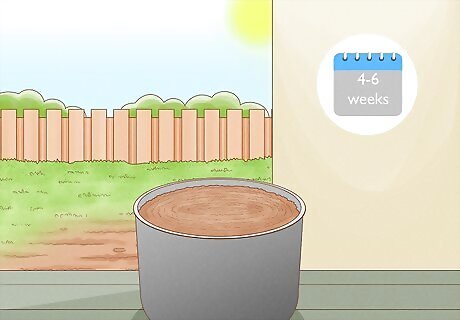
Keep the pots in the shade for 4-6 weeks. Keep the pot out of direct sunlight. The best place to keep it is next to a shady exterior wall or under the cover of a large tree. It will take 4 to 6 weeks before your bamboo sprouts and grows through the soil again. Bamboo grown from rhizomes can be put back into the soil when nighttime temperatures are consistently above 55 °F (13 °C).



















Comments
0 comment